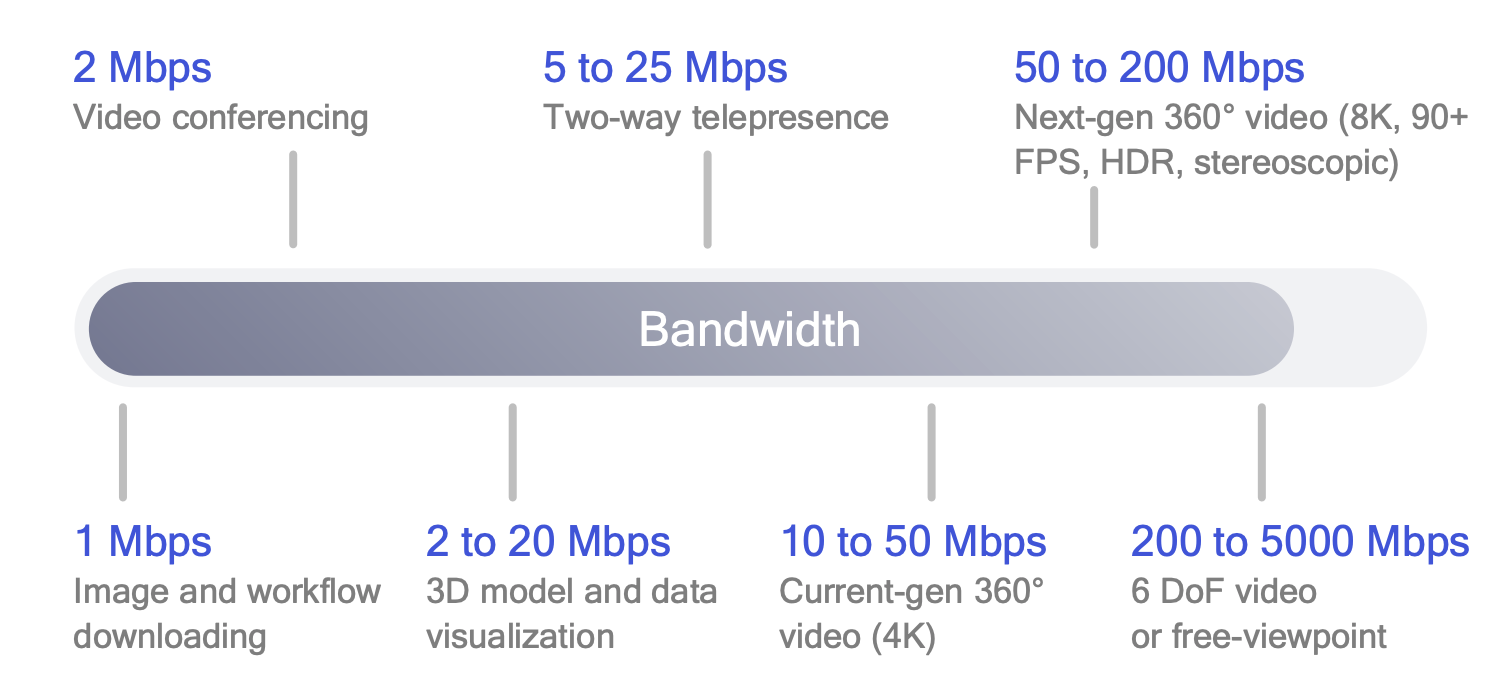How 5G Improves Video Performance and Monetization
Streaming video will surpass linear when powered by 5G

In order to displace an incumbent technology, a new technology must provide significant benefits to users. Streaming video provides greater flexibility, more content and new viewing and engagement models over traditional linear TV. However, the quality of experience (QoE) of linear video delivery has been better, with better picture quality, lower latency, faster channel switching and fewer playback issues.
But with access to greater bandwidth and reduced latency, such as offered by 5G, it can propel streaming to an unqualified benefit over linear.
Ericsson forecasts a total of 190 million 5G subscriptions by the end of 2020. While the COVID-19 pandemic has slowed some 5G deployment, it is still estimated that, by 2025, 5G will have 2.8 billion global subscribers. Of that total, 88% are projected to be mobile.
At the same time, the COVID-19 lockdown has driven digital transformation quickly, and consumers have spent a huge amount of time online. According to figures from Verizon, during the lockdown, there was a 26% increase in global video streaming traffic and a massive 71% increase in gaming traffic compared to normal pre-COVID usage.
5G will transform video away from traditional linear TV by offering users better engagement and new ways to consume content, such as multiple stream viewing and volumetric video, which is key for AR and VR. It also presents significant benefits to service providers, like the ability to address new markets and improve monetization.
ADDRESSING LATENCY AND BANDWIDTH LIMITATIONS
When streaming live events, especially sports, there is a slight delay between what’s happening on the field and what is being delivered on a 4G network—an average latency of around 50ms. When expanding this to other scenarios, like cloud-based gaming, latency affects the response time as well.
Some viewing activities are particularly bandwidth-intensive. According to data from Qualcomm, supporting 6 Degree of Freedom (6DoF) head motion parallax 360-degree video (such as for an Oculus Quest) consumes more than 200 Mbps. Below are Qualcomm’s bandwidth estimates:

5G is expected to provide consumers with a seamless viewing experience because of its massive improvements on latency and bandwidth. 5G is expected to provide a 10x decrease in end-to-end latency. The faster speed improves the production of streaming live events on mobile devices. It can not only compete with fiber, but also give access to consumers who don’t already have access to very high bandwidth connections. Furthermore, 5G enables a lower cost per gigabyte ratio, which means that streaming capabilities will be more cost efficient.
For example, KT Corporation, South Korea’s largest telecommunications company, launched its 5G Olleh TV mobile app on time synchronized playback, multistream/multicamera for live content, low latency and 360VR on a 4K stream. With the VisualOn Player, KT’s Olleh TV Mobile users are able to watch music and sports the way they want, focusing on the camera angle or performer that they are most interested in.
KDDI, the leading Japanese communications provider, is another example of offering new services to compel subscribers to upgrade to 5G services. KDDI’s au Smart Pass mobile app now features high-quality streaming video services for its subscribers, such as multiple streams synched on a single screen. The VisualOn Player enables new ways for Smart Pass users to experience live sports and concerts over a 5G network.
BETTER AD DELIVERY, BETTER MONETIZATION
As 5G will improve the video performance, will it also contribute to video monetization?
Conviva’s 2020 Q1 State of Streaming report showed 46.3% of ad opportunities were missed, either because of playback issues or lack of inventory to serve. The most common playback issue is the ad was not served on time, which means it does not play. When ads don’t play, or are not accurately tracked, the service provider doesn’t get paid. The greater bandwidth and lower latency of 5G will help with smooth handoffs between content and advertising and ensure that ads are served on time, and thus play.
The inventory issue is expected to be temporary, caused by many activities and businesses being shuttered, but the long term trend is toward greater spending on video advertising. For example, according to the IAB UK PwC Digital Adspend study, video has become the key driver for digital ad spend, encompassing approximately 44% of the £2.31 billion display market.
With 5G in place, service providers will have access to more sophisticated ad insertion and analytics platforms—even at the video player level. Higher quality ad delivery drives greater engagement, and granular tracking and analytics means more accurate reporting for advertisers to justify increased budgets.
5G is already seeing successful rollouts in Asia. The impact of COVID-19—limiting live events but driving users to streaming video—has accelerated the rollout of more innovative and compelling streaming services to fill in the gap. In turn, digital transformation has been greatly accelerated. Bottom line, 5G will allow for higher quality and more engaging content to garner eyeballs.
Michael Jones is senior vice president and head of Business Development at VisualOn.
Get the TV Tech Newsletter
The professional video industry's #1 source for news, trends and product and tech information. Sign up below.
